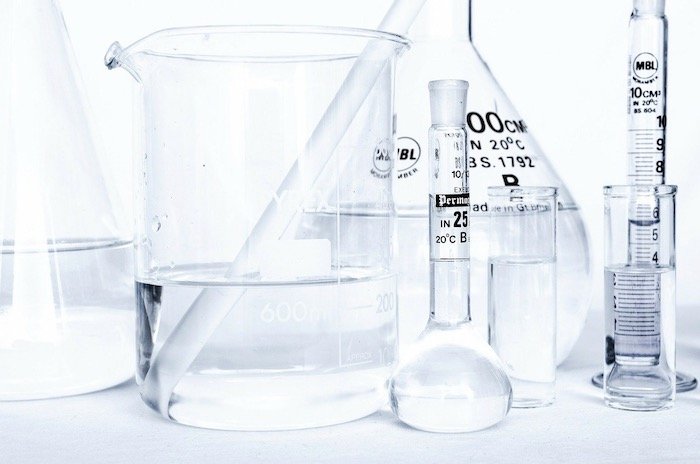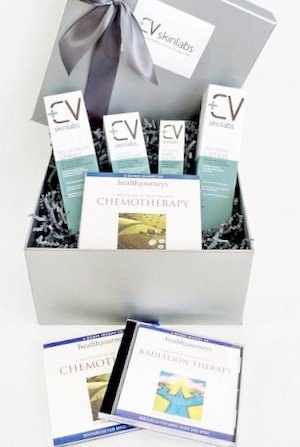
We don’t have any clear evidence that cancer-causing chemicals in beauty products cause cancer.
But we do have evidence that some ingredients that are used in beauty products have links to cancer.
It’s not the type of connection that makes you feel good!
We suggest playing it safe and doing all you can to avoid the following ingredients in your beauty products.
7 Cancer-Causing Chemicals You May Find In Your Cosmetics
1. Hair Dye Can be a Cancer-Causing Chemical
We’re not saying you should stop dying your hair. But it’s good to be aware that hair dye products contain many chemicals, including some that may cause cancer.
According to the American Cancer Society, researchers have been studying a possible link between hair dye use and cancer for many years. Some studies have shown a link and some have not.
The good news is that hair dyes have improved over the past few decades, and those we use today aren’t as dangerous as those used in the 1970s. After animal studies showed that hair dye chemicals caused cancer, manufacturers changed their products to contain fewer of those chemicals.
Hairdressers and barbers are most at risk as they are exposed to the hair dyes more often and for longer periods. (Always use safety equipment like gloves and masks.)
In general, if you eat a healthy diet, exercise regularly, and don’t smoke, you are at a lower risk of cancer. To limit your risk from hair dyes, try coloring your hair less often and if you’re doing it yourself, always wear gloves. You may also want to talk to your stylist about newer vegetable-based hair dyes. They don’t work as well at coloring your hair, but they can be a safer option.
2. Parabens May Be Cancer-Causing Chemicals
These are preservative chemicals that can penetrate the skin and act as weak estrogen in the body, potentially “turning on the growth of hormone-receptor-positive breast cancers,” according to Breastcancer.org.
Scientists have found parabens in breast tissues and breast cancers, but this alone isn’t enough evidence to show that they cause cancer. There are safer preservatives to use, however, so it’s best to avoid parabens.
3. Phthalates Are a Possible Cause of Cancer
These are chemicals used to make plastic products and to help hold color and reduce brittleness in nail polish and hair spray. They are also a component of many personal care and cleaning product fragrances.
Phthalates disrupt hormone function. They have also been linked to cancer. The International Agency for Research on Cancer (IARC) classifies one type of phthalate—diethylhexyl phthalate (DEHP)—as a possible cause of cancer. The National Toxicology Program also says that DEHP is reasonably anticipated to be a carcinogen.
Breast Cancer Prevention Partners (BCPP) states that exposure to phthalates has been linked to breast cancer as well as obesity and asthma.
4. Formaldehyde-Releasing Preservatives
Formaldehyde is a colorless gas that is sometimes formed as a by-product of preservatives used in cosmetics. It has been classified by the U.S. Environmental Protection Agency (EPA) as a probable human carcinogen.
You won’t find formaldehyde listed on the label, since it comes from other ingredients typically found in nail polish, nail glue, eyelash glue, hair gel, hair-smoothing and straightening products, baby shampoo, body soap, body wash, and color cosmetics.
These other ingredients include the following (which you should avoid):
- Quaternium-15
- DMDM hydantoin
- Urea
- Sodium hydroxymethylglycinate
- 2-bromo-2-nitropropane-1,3-diol
- Blyoxal
5. 1,4-dioxane Is a Cancer-Causing Contaminant
This is another chemical byproduct that can show up in some beauty products. Also considered a “contaminant,” it is an industrial chemical that is formed during the manufacturing process of certain ingredients. These include detergents, foaming agents, emulsifiers, and solvents. They usually contain the following prefix, words, or syllables:
- PEG
- Polyethylene
- Polyethylene glycol
- Polyoxyethylene
- -eth-
- -oxynol-
1,4-dioxane is classified by the EPA as a potential human carcinogen. The U.S. Food and Drug Administration (FDA) has been testing for this contaminant for decades. The good news is that the results show levels are going down.
The EWG’s Skin Deep database, however, indicates that at least 8,000 products on the market contain ethoxylated ingredients, which can be contaminated with 1,4- dioxane.
6. Benzene is a Cancer-Causing Chemical
As noted in our last post, Study Finds Harmful Ingredients in Sunscreen—How to Choose a Safe Product, benzene was recently discovered in several sunscreen and after-sun-care products. Scientists believe it was a byproduct of the other ingredients, mainly chemical sunscreens like oxybenzone.
Benzene is a colorless, flammable liquid that evaporates quickly when exposed to the air. It can be absorbed through the skin and is known to cause cancer, based on evidence from studies in both people and lab animals. It is most commonly linked to blood cancers like leukemia.
 7. Asbestos is a Cancer-Causing Chemical
7. Asbestos is a Cancer-Causing Chemical
This isn’t a cosmetic ingredient, yet products that contain talc have the potential to also contain asbestos.
Talc and asbestos often exist together in the earth. Talc is a naturally occurring mineral that is mined from the earth. Asbestos is also a naturally occurring mineral that is composed of flexible fibers, but it is known to be carcinogenic.
In a recent study, researchers found asbestos in almost 15 percent of talc-based cosmetics tested. The FDA notified the public of the results in 2020 and worked together with the manufacturers of those products to recall them. The FDA committed to doing a follow-up study on another 50 samples.
A Word from Our CV Skinlabs CEO on Cancer-Causing Chemicals
Our CEO, Pamela Friedman, recently went through a difficult cancer experience.
“From my own experience, I can tell you that many healthcare providers are still recommending irritating, fragranced, and potentially harmful products to people living with cancer. Some of these products contain cancer-causing ingredients, while others contain ingredients known to disrupt hormones.
They may not realize the dangers in these products, or know that there are good working and effective alternative options out there. So I always tell them about our amazing and toxin-free CV Skinlabs products!”
In summary, it’s unlikely that the occasional use of a beauty product is going to cause cancer. But we use these products day after day, year after year. Right now, we just don’t know whether or not that is increasing our risk of the disease.
To stay safe, be sure to always check the ingredients on the back of the label before buying a product. Compare them against our “Ingredients to Avoid List.” And buy from reputable, conscientious companies that care about what they’re putting in their products.
For anyone living with cancer or who knows someone who is, may we suggest:
CV Skinlabs Mind Body Spirit Box
The perfect gift for anyone on a cancer journey.
Natural. Organic. Fragrance-free.
Toxicologist-Screened.
Dermatologist-Recommended. Oncology Approved.
This wellness box includes four products to:
- provide calming, moisturizing, soothing, and healing benefits to help manage the side effects of surgery, radiation, or chemotherapy;
- and a guided meditation CD from Health Journeys (your choice of chemotherapy or radiation) to help clear your body and mind of negativity and stress.
Do you make a point to avoid these cancer-causing chemicals?

